Norm’s Best Knowhow

In every issue, TOH master carpenter Norm Abram dishes out advice to readers in his “Tricks of the Trade” column. Here, we’ve compiled his best how-to tips for stress-free DIY projects. Learn how to make sure roof shingles go down straight, exterior lights don’t leak, and baseboards go in with a finished edge.
Tying Short Ropes Together
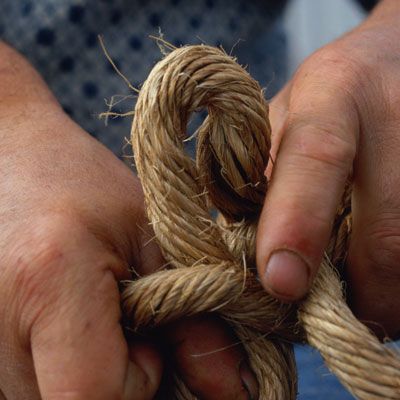
Q: I don’t always have a rope that’s long enough. Is there a way to securely, but temporarily, tie together short lengths of rope?
—William Wildman, Marlton, N.J.
A: Knots that join ropes together are called bends. My favorite one is a sheet bend, which is easy to tie and won’t slip. Unlike the commonly used square knot, sheet bends are especially handy for joining ropes of different diameters, and they’re easy to untie after being under a lot of tension.
Tying Short Ropes Together: Step 1
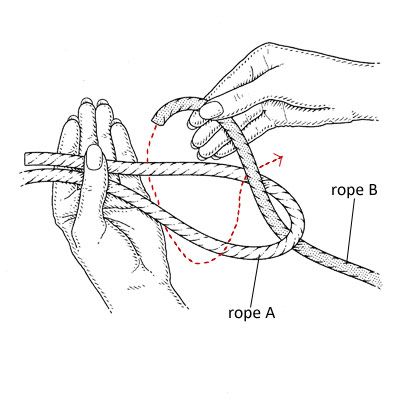
1. Bend the end of one rope (A) into a loop, called a bight. Feed the end of the other rope (B) up through the loop and behind both its legs.
Tying Short Ropes Together: Step 2
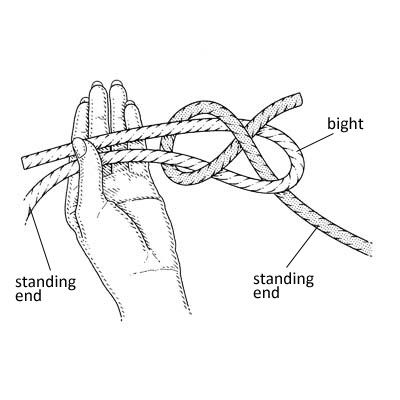
2. Lead the end of rope B so that it goes across the top of the bight and then under itself. Tighten by pulling both standing ends. Leave at least 1 inch of rope B beyond the bight.
Supporting Long Shelves

Q: How do you keep shelves from sagging? The ones we’re putting into our linen closet are 59 inches long and don’t have any center support.
—Mary Jasper, Lakeville, Minn.
A: To prevent sagging, I generally keep a shelf’s length to 36 inches or less. But if it has to be longer, and it isn’t possible to put in intermediate supports, I’ll build the shelf in a way that it comes out super stiff. Here’s how to do it.
Supporting Long Shelves

First, glue two pieces of ¾-inch hardwood plywood to each other. Next, cover the front edge with a ¾-inch-thick by 1½-inch-wide strip of solid wood. Attach the strip with glue and finishing nails, making sure to stagger the nails above and below the glue line. After the glue dries, sand the strip flush with the plywood, and round over its edges. The longest shelf I’ve made this way is 56 inches, but another 3 inches shouldn’t be a problem.
Snapping Angled Chalk Lines
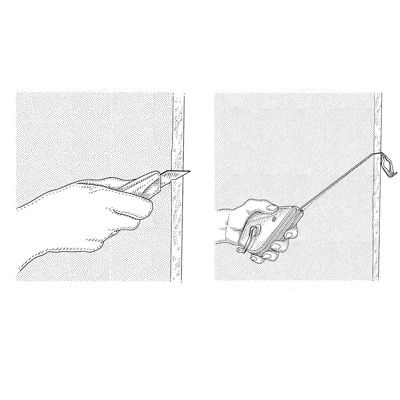
Q: Whenever I try to snap angled lines on drywall, the chalk line’s hook slips. I don’t want to put a nail in the edge to hold the hook. What should I do instead?
—Allan J. Wicklund, Riverhead, N.Y.
A: The hook on the end of a chalk line is a handy device when you pull the line perpendicular to the edge. But if you have to snap angled lines across a sheet of drywall or plywood and you’re working solo, make a small notch in the edge of the sheet with a utility knife where you want the line to start (A).
Slip the line into the notch, leaving the hook on the sheet’s back side (B). Now you can pull the line taut without worrying about the other end slipping.
Cutting a Hole in Drywall
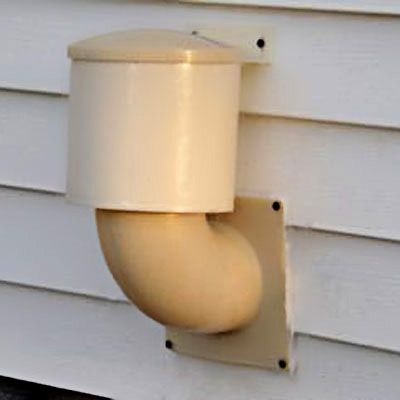
Q: I have a dryer exhaust vent pipe to install through an exterior wall. How do I make a hole in the drywall that will line up perfectly with the hole in the siding?
—Joe Reed, Williamsburg, KY
A: Starting inside the house, make a small hole in the drywall and check for studs, wires, and pipes. Once you know you have a clear spot, cut the hole for the pipe in the drywall. Take out any insulation that’s in the way. Dryer-vent pipe is usually 4 inches in diameter, so the hole should be about 4¼ inches across to provide some wiggle room for fitting. Vent kits typically have a collar that covers minor gaps between drywall and pipe.
Cutting a Hole in Drywall
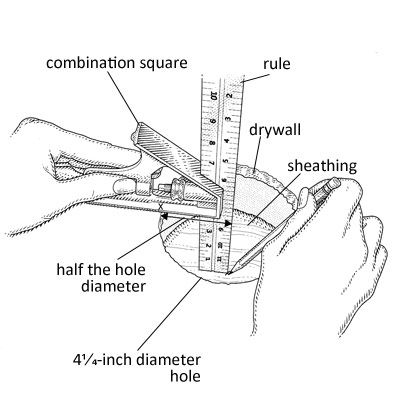
Here’s the trick: Use a combination square to locate where to drill the hole in the sheathing and siding. Measure 2⅛ inches—half the hole diameter—from the edge of the rule to the square’s leg and make a mark on that leg, as shown. Align this mark with the edge of the drywall, slide the rule to the sheathing, and mark where the corner of the rule and the sheathing meet. Do this in several locations around the hole just to verify the center point.
Now drill a small hole at that point through the sheathing and siding. That hole will show you the center for the bigger hole you’ll then cut from outside the house.
Installing Roofing Shingles

Q: When I work solo, snapping chalk lines to install roofing shingles gets tedious, and the line’s hook often slips out of position. Is there a better way to do this job?
—Colby Wong, Brooklyn, N.Y.
A: When I’m laying out roof shingles or installing clapboards, I start by marking both ends of the wall or roof for the appropriate spacing. Then I drive finishing nails into the marks at one end, angling them slightly away from the marks at the other end.
Installing Roofing Shingles
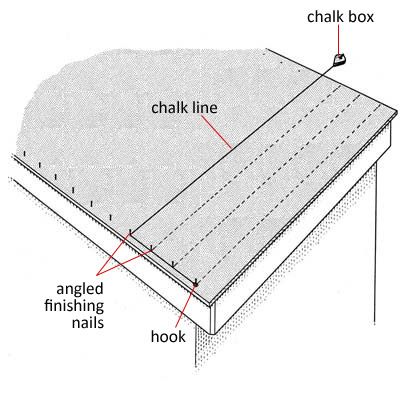
I snap the first line as usual, after hooking the chalk line on the lowest nail. But to snap the next line, I just leave the hook in place, wind the line over the next nail, and pull the chalk box to the correct mark. Do the same for the remaining courses; it’s much faster and easier than resetting the hook each time, and the hook never slips.
Cutting Balusters
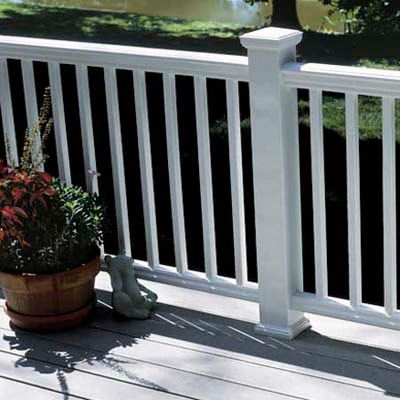
Q: What’s the best way to cut a bunch of balusters for my deck railing so that they all come out the same? Measuring and cutting each one seems awfully tedious.
—Clint Johnson, Paola, Kans.
A: There’s an easy way to get around reaching for your pencil and tape on each cut for this kind of project. Using a miter saw, an extension table, and a stop block, you can efficiently turn out multiple pieces of whatever you’re cutting to the exact same length.
Cutting Balusters
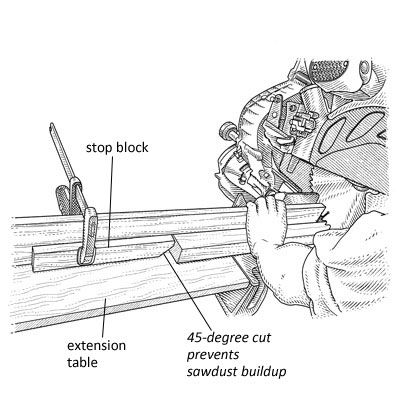
The stop block is a piece of scrap wood about a foot long that you clamp to the extension table to set your standardized length. All you do is butt each spindle against the block and cut away. Just don’t attempt to cut pieces so short that holding them puts your hand dangerously close to the blade. The real trick, however, is to cut a 45-degree angle into the end of the stop block, leaving only a ¼-inch flat spot to use as the stop. This prevents the sawdust from building up against the stop and causing spindles to be cut short.
Installing Outdoor Light Fixtures
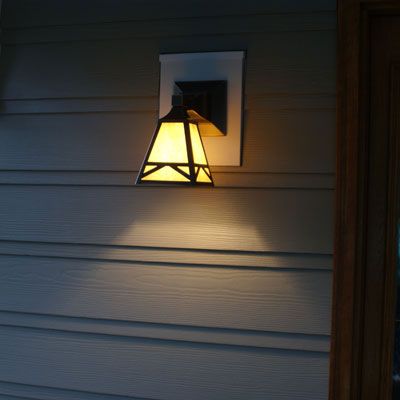
Q: Can we install outdoor light fixtures over cedar lap siding? I’m afraid there will be ugly gaps between the back of the fixtures and the house.
—Pam Kushnir, Apollo, PA.
A: Anything destined for an outside wall—light fixtures, outlet boxes, and dryer vents—should be attached to a mounting block that rests against the sheathing to keep water from getting past the fixture and underneath the siding.
The trick is to make this attachment weatherproof so that no water reaches the sheathing. Here’s how to go about it.
Installing Outdoor Light Fixtures
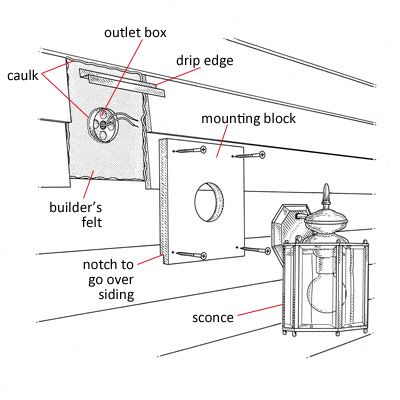
1. First, cut a block to size out of ½ wood trim or, even better, no-rot cellular PVC. I like to size my blocks so that the top and bottom edges line up with full courses of siding because it looks better. Use a jigsaw to cut a hole in the block to fit around the outlet box. Drill and countersink pilot holes for screws in two opposite corners.
2. Hold the block up against the siding’s lower, or butt, edge, and, using
the block as a guide, mark the vertical cuts in the siding with a utility knife. Set the block aside, and use the knife to carefully cut away the siding along the top and the marked sides. Don’t cut into the builder’s felt or house wrap, or the course of siding below the block’s bottom edge. Instead, cut a notch in the back of the block’s lower edge to fit over the uncut siding.
3. To stop water from getting behind the block at the top, slip a drip cap between the siding and wrap. Squeeze a fat bead of caulk around the perimeter of the cutout, press the block into it, and drive a screw through each pilot hole and into the sheathing. Now attach the fixture to the outlet box. When you’re done, you’ll have a solid, secure fixture base that also helps protect your walls from water.
Cutting Decorative Molding

Q: I plan to install decorative molding in our kitchen, but in one location I’d like to have it stop before it reaches the intersecting wall. How do I make that look good?
—Ed Ludlum, Ballston Lake, N.Y.
A: When a molding has a profile, it will look much better if you highlight that profile by cutting a small, wedge-shaped piece from the same stock. This piece, which caps the end of the molding, is called a return because it “returns” the profile back to the wall. Knowing how to cut a return is a useful skill, whether you’re installing baseboard caps, wainscot caps, or crown molding. Here’s how to do it safely using a miter saw.
Cutting Decorative Molding: Step 1
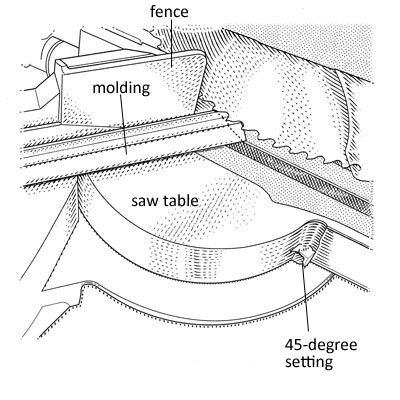
1. Set the molding against the saw fence, with its narrow edge facing up, and make a 45-degree miter cut where you want the main molding to stop. This is the same sort of miter you make to go around an outside corner or frame a picture. Now install the molding.
Cutting Decorative Molding: Step 2

2. Swing the saw blade to the 45-degree mark on the opposite side. Take a scrap piece of molding that’s at least 18 inches long, to keep your fingers safe, and place it against the fence on the side opposite the first cut, narrow edge up. Make another outside miter in the end of the molding.
Cutting Decorative Molding: Step 3
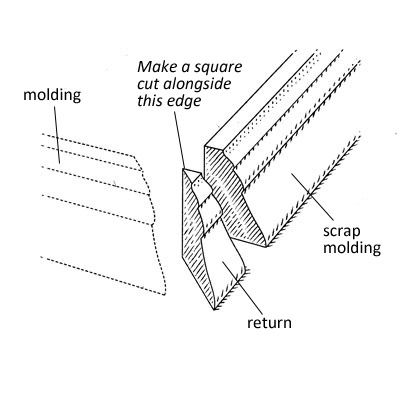
3. Turn the blade to 0 degrees. To prevent the return from being thrown back under the saw, place a 1× vertically on the saw table and clamp it to both fences. There’s no need to measure for the next cut; just position the mitered end of the scrap piece under the blade at the point where the miter meets the back side of the molding. Take care not to cut into the miter’s face. Now cut both the molding and the 1×. The return will stay put.
Cutting Decorative Molding: Step 4
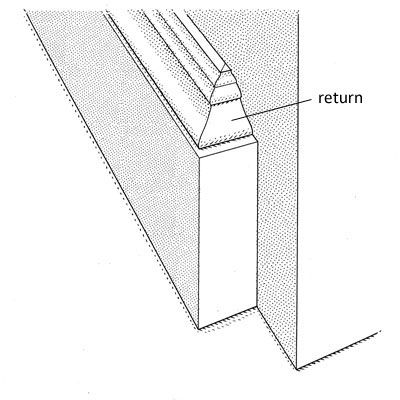
4. Place the return’s miter against the miter on the molding. If it doesn’t fit perfectly, don’t try to trim it down with the saw—your fingers would be too close to the blade. Instead, sand it down with a block and coarse sandpaper or go back to Steps 2 and 3 and cut another return off the end of the scrap stock. When the fit is perfect, glue the return to the molding and use painter’s tape to hold it there while the glue dries.
